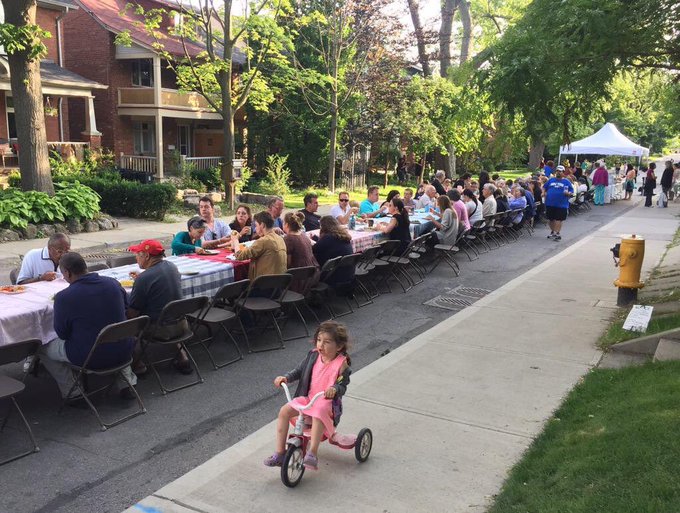
What’s A Nuisance?
Nuisance complaints are a major cause of legal action in HOAs, both by and against homeowners. For those who might be unfamiliar with the legal definition of “nuisance”, a nuisance typically consists of one or more of the following issues:
- an activity that unreasonably interferes with the use or quiet enjoyment of another resident of their separate interest or exclusive use common area;
- a use that creates conditions that are hazardous, noxious or offensive; or
- a violation of a local, state or federal law.
Common nuisances at homeowners associations include odors (e.g. cigarette smoke, garbage, pets and food), noise (e.g. loud conversations, yelling, musical instruments, home theatres and hard surface flooring), visual issues (e.g. clutter on balconies and patios) and health and safety issues (e.g. outdoor fires, pests/rodents, hoarding and smoking).
Almost all California community association CC&Rs contain a “nuisance” section addressing the definition of nuisances and their prohibition. This is a catch-all provision that can address issues that are not expressly addressed in the association’s Governing Documents. Nuisance violations should be addressed by an association’s board of directors in the same manner as other types of governing document violations. The question that a board will need to grapple with is the level of association involvement. Even if the alleged nuisance is only impacting one other owner, California law seems to require that the association attempt enforcement.
In this article, we address six common nuisances:
- Smoking on Balconies and Patios
- Home Businesses
- Noise From Units Above
- Children’s Behavior
- Renter’s Bad Behavior
- Dogs/Pets
We offer a few methods an association’s board of directors can use to address and resolve those nuisances.
It is important to note that if an association does not act promptly and decisively in enforcing nuisance covenants and rules, then the association may be barred from enforcing those governing document provisions against an offending owner (and possibly other owners). So, an association’s board of directors should systematically and uniformly review nuisance complaints and, if appropriate, enforce the nuisance provisions contained in the association’s governing documents.
Smoking On Balconies and Patios
Over the last several years, we have seen secondhand smoke complaints become more and more common. As more people stop smoking (and they are), more and more people are vocally complaining about smoke that is wafting into their homes.
If a balcony or patio (or terrace or deck) appurtenant to a residence is exclusive use common area, then an association’s board can likely adopt an operating rule banning smoking in the common area, which will apply to those appurtenant areas. And the association members can vote to approve a CC&R amendment banning smoking in common areas at the development, which would include exclusive use common area balconies and patios. The owners can also vote to amend the CC&Rs to prohibit smoking in yards, homes or units. Keep in mind that if the board will be taking action to enforce an operating rule, it is important to make certain the board’s actions do not exceed the authority given in the CC&Rs. There are limits to how far rules can go.
If an owner violates the smoking restriction, then the board should call the owner to a properly noticed hearing before the board with an opportunity to be heard, and it can then impose discipline (e.g. possible suspension of membership rights and the imposition of fines, depending on the language of the CC&Rs) as permitted under the association’s governing documents. If an owner continually fails to comply with the association’s smoking restrictions, the board will need to meet with the owner in internal dispute resolution (IDR – often referred to as a “meet and confer”) and/or alternative dispute resolution (ADR – such as mediation or arbitration). If this is a neighbor-toneighbor dispute in which the association has become involved, the association would serve on the complaining and smoking owners a Request for Resolution, pursuant to Section 5900 of the Civil Code.
If the nuisance issue is not resolved after these enforcement actions are taken, the board will need to decide if the nature of the dispute, its impact on the community and the cost in terms of money and time warrant the association filing an enforcement action/lawsuit against the owner. The relief sought from the court in that action would be the issuance of an injunction against the owner to bar them from smoking on their balcony/patio.
If the balcony or patio is an element of the unit/lot (rather than exclusive use common area) and only one neighbor/ owner is complaining about smoking in that area, then the complaint should generally be dealt with as a neighbor-toneighbor dispute (more on neighbor-toneighbor disputes below). However, if multiple owners are complaining about smoking on the balcony or patio or yard, this is not a neighbor-to-neighbor issue or dispute.
Some cities have adopted ordinances that prohibit smoking on balconies and patios in multi-dwelling unit residential buildings (whether the balconies and patios are exclusive use common area or an element of a unit). For example, the City of Santa Monica adopted an ordinance in 2010 that prohibits smoking within 15 feet of any window or door of an apartment or condominium unit; this ordinance effectively prohibits smoking on balconies and patios at any condominium project in Santa Monica. Some cities, like Pasadena, have even adopted ordinances prohibiting smoking within residences in multi-dwelling buildings, which would include owners’ units in an association’s development. Should an owner fail to comply with such a city ordinance, that failure to abide by the law would likely be considered a nuisance violation under the association’s CC&Rs, and the board could pursue IDR and/or ADR and, if unresolved, a court action related to that violation.
With respect to smoking within an owner’s separate interest (home or unit), if smoking within a unit/lot causes a nuisance to another owner, the offending/ smoking owner can be required to take steps to minimize the impact of his/ her smoke on other units to avoid the creation of a smoke nuisance (e.g. use air circulators/fans/cleaners, not smoke near open windows, seal air ducts). However, in many instances, as stated above, smoking complaints between units are considered a neighbor-to-neighbor dispute that may not affect the community as a whole. The above said, boards and managers should keep in mind that the smoking conduct needs to be evaluated with respect to the impact it would have on a person of ordinary and reasonable sensibilities, not a hypersensitive person.
Home Businesses
Many people have started businesses from their homes, or have been asked by their employers to work from home in order to save the employer overhead costs. If there is a blanket ban on commercial activities in an association’s governing documents, then technically it is possible that no home office is permitted. Reasonably speaking, however, a teacher grading papers, a lawyer reviewing documents, an accountant preparing tax returns, etc., would not be a commercial activity. The issue is whether the use of a home for commercial purposes will impact the residential character of the community. If home offices are permitted, the following should be prohibited to protect the common area and avoid the creation of a nuisance:
“no items should be manufactured, stored or sold from or in the unit/ lot in a manner that is visible from the common area; no employees should work in the unit/lot; and no clients, customers, messengers, delivery personnel or other individuals should regularly visit the unit/lot or cause a nuisance at the development.”
These are the types of activities that can impact the residential character of the property.
We have been called upon to address home offices where there are multiple employees, refrigerator repair with people coming into the association to drop off refrigerators, car repair, piano lessons, tutoring of groups of kids, hair cutting, and the list goes on. If an owner violates an association’s restrictions on commercial use of their unit or home, the association can levy fines, engage in IDR, ADR or an enforcement action against the owner. Generally speaking, a court would be more likely to enforce an association’s commercial use restrictions if there is actual commercial activity, such as employees, customers or clients visiting the owner’s residence, deliveries being made to the owner’s residence and/or an impact on the residential character of the community.
Noise From Units Above
In buildings with stacked units, there are often issues related to impact noise complaints involving activities in upstairs units. The most common of these complaints relates to hard surface flooring, in that the presence of hard surface flooring (such as wood, tile or stone) amplifies noises related to walking, moving furniture, exercise regimens and play activities. Many associations’ CC&Rs or other Governing Documents, especially those that are older, do not prohibit hard surface flooring, but most cities have ordinances that require a low threshold for required sound attenuating materials (e.g. floor surface padding, underlayment).
In the event a nuisance violation exists with respect to hard surface flooring installed that purportedly does not comply with an association’s governing documents, it is a good idea for someone from the board to go and visit the complaining owner’s unit to determine if there is really a nuisance issue. An association’s enforcement options are generally limited to two actions: (1) the filing of a lawsuit seeking removal of the noncompliant flooring and the installation of compliant flooring materials; and (2) requiring proper sound attenuating materials under the floor covering, the placement of area rugs with appropriate sound attenuation materials and thickness padding in high traffic areas and the placement of felt cushions under furniture legs to help reduce noise. If an upstairs flooring violation/noise nuisance is alleged, testing can be done to determine the decibel level of flooring noise, and this testing should be paid for and conducted by the complaining owner and submitted with their complaint/ violation notice to the association.
As for complaints about loud noises unrelated to the type of flooring in a unit above, such as noise nuisances related to music, televisions and home theaters, parties, bedroom activities and vibrational energy (from speakers and other noise devices), those complaints need to be investigated and/or evaluated on a reasonable basis by the board. Following are three considerations the board should keep in mind:
- if there is only one owner making the noise complaint, then this matter could be a neighbor-to-neighbor dispute;
- nuisance issues need to be addressed with deference to the sensibilities of an average person, not a hypersensitive person; and
- noise nuisance complaints are always fact specific, and may need to be dealt with differently depending on whether the noise issue is ongoing or was a one-time event.
With respect to these types of nuisances, which tend to be more technical to deal with than other types of nuisances, it is advisable for a board to contact association legal counsel to formulate a plan to address the dispute and confirm the association’s responsibility (if any) to resolve the dispute.
Children’s Behavior
We are often contacted by managers or board members regarding nuisance complaints related to children. Typically, we hear that owners are complaining about kids playing in the common area, claiming that there is too much noise. State and federal fair housing laws do not allow an association to discriminate on the basis of a resident’s or guest’s age, and an association should not adopt or enforce any governing document provision that treats children differently or refers to them separately. For example, a rule that limits children’s activities in the common area is going to be found to be discriminatory. Even a rule that limits recreational activity in the common area may be found to be discriminatory. In fact, several associations have been fined by Fair Housing authorities for these types of rules. And a pool rule regarding incontinency should require that all persons using the pool who are incontinent must wear swimwear specifically designed for incontinent persons while in the pool, rather than the rule providing that children should wear swim diapers while in the pool (or, worse yet, only allow potty-trained children in the pool).
An owner’s family members, cohabitants, guests, tenants and invitees are all required to comply with the association’s governing documents, no matter their age. So, if an owner’s child, or a guest’s child, violates the association’s governing documents by, for example, yelling, running or skateboarding in the common area, the board needs to address that violation in the same manner as if an adult committed the violation. Most nuisance issues involving children relate to noise nuisances, which are discussed above. When addressing these complaints, always refer to children as persons (which they are) to avoid the slippery slope of fair housing violation complaints.
Renters’ Bad Behavior
An owner is ultimately responsible for the actions of their tenants (as well as the owners’ family members, cohabitants, guests and invitees), so the owner is the person who would be subject to a hearing and discipline for their tenants’ violations. Many associations’ CC&Rs require an owner to provide the CC&Rs and other governing documents to a tenant before the tenant moves into the owner’s property, and some CC&Rs require owners to include a reference to the CC&Rs and other governing documents in the tenant’s lease with a statement that a violation of the association’s governing documents is grounds for immediate termination of the lease. These types of provisions are important to help ensure that tenants are familiar with the association’s covenants, restrictions, rules and regulations and comply with same.
If a tenant violates the governing documents, the owner should be advised of the violation and called to a hearing, as appropriate (the association has no authority or right to discipline a tenant, as the tenant is not a member/owner). The board can discipline the owner for his/her tenant’s violations, and require the owner to ensure that the tenant commits no further violations; as necessary, the association can pursue legal action to obtain a court order to enjoin the owner and the owner’s tenant from committing ongoing violations. If the association’s CC&Rs include a provision that allows the association to seek removal/eviction of the tenant in the owner’s name for governing document violations, that may be a viable option for the board; the cost of that legal action would likely be chargeable to the owner as a cost of the enforcement action. Further, a useful enforcement tool (which can be imposed after a properly noticed hearing with an opportunity to be heard before the board, and subject to governing document authority) is to suspend the owner’s and the tenant’s right to use the association’s common area amenities as the result of a governing document violation by the tenant.
Dogs/Pets
Pet nuisances are a regular issue at many associations, particularly with respect to dogs. Loud and/or continuous barking (and other animal noises), soiling in the common area, damage to common area property and unleashed/uncontrolled animals in the common area are all examples of common pet violations. Owners are required to ensure that their pets are in compliance with governing document provisions related to animals, and owners can be disciplined (after notice and hearing) for pet violations. In certain cases, an association can force the removal of a pet that becomes a nuisance, and the association in such a case can seek reimbursement of its attorneys’ fees when prevailing in that enforcement action. It is important to note that while the association may have to make a reasonable accommodation under state and federal fair housing laws to allow an owner to keep a service or companion animal in their unit/lot that may violate type, size, weight or breed restrictions contained in the association’s governing documents, that service or companion animal is not permitted to create or cause a nuisance at the association’s development.
Neighbor-to-Neighbor Disputes
There are some cases where a complaint raised by an owner or owners is in actuality a neighbor-to-neighbor dispute that does not involve the community interest, meaning that only one unit is being affected by the alleged nuisance and no other residents have complained of the alleged nuisance (typically a noise or odor issue). In that case, the board may determine that the association has no obligation to address or resolve the issue. A board should always check with association legal counsel if it is considering making this determination to ensure it is in a defensible position to make that determination.
Even if a board determines that the association does not have a duty to resolve a nuisance issue between owners, it is possible (or perhaps likely) that the association will be dragged into a lawsuit involving the matter. A board might consider engaging in a three-way mediation with the two owners and the association, with the board or the association’s legal counsel acting as facilitator, to try and help resolve the issue and avoid the association being named, and having to defend itself, in a lengthy and expensive enforcement action/lawsuit. If this informal mediation is unsuccessful, it may be necessary for the board to pursue a formal mediation between the two owners and the association, with the cost of the mediation split evenly three ways between the two owners and the association. A board should confer with association legal counsel before undertaking such mediation to ensure that it is following proper protocols and adequately protecting the association.
Enforcement and Resolution Considerations
Nuisances can be dealt with in the same manner as other governing document violations. If permitted by the governing documents, fines and suspension of membership rights (voting and use of common area recreational facilities) can be imposed after a properly noticed hearing with an opportunity to be heard by the board. If an association does not have a formal violation and/or hearing policy, the association’s board should adopt one to ensure compliance with Civil Code Section 5850.
When determining how to resolve a nuisance violation, an association’s board of directors needs to consider the level of board intervention required, whether the board should engage in IDR or ADR with the owners and whether legal action seeking injunctive relief is required. A board that does not act timely and decisively to enforce nuisance restrictions can expose the association to court-imposed penalties (and the board could be subject to a breach of fiduciary duty claim). And, boards should not be vague, arbitrary or unreasonable in their enforcement of nuisance provisions – nuisance provisions in governing documents can backfire.
To ensure that a board’s actions with respect to nuisance issues are defensible, and that the association is properly addressing the situation and protected, an association’s board should always confer with association legal counsel when dealing with nuisance issues that may involve: possible legal action against an owner, resident or the association; statutory protections; complicated facts; and/or fair housing laws.















